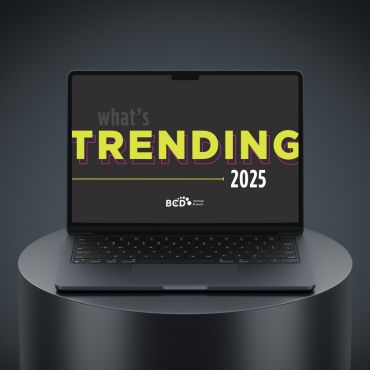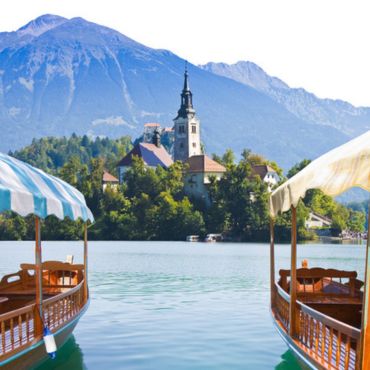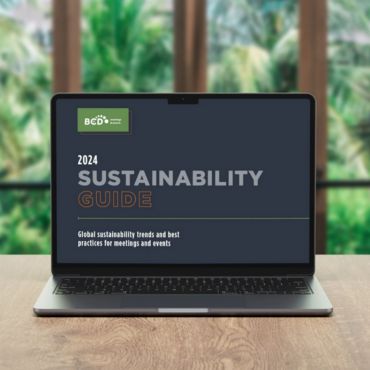Resources | Blog
Meetings And Events Trends 2025: Regional Insights And Opportunities
As we near 2025, the meetings and events landscape varies across regions, each facing its own set of challenges and opportunities. Here’s a look at the trends shaping the industry in APAC, EMEA, LATAM, NORAM, and the UK.
APAC
- Business is growing aggressively, largely driven by in-person events, with approximately 80% of meetings held face-to-face.
- Budgets are largely flat for 2025. However, restructuring among clients has created ambiguity regarding budget ownership, leading to a reduction in meeting and event requests in certain areas.
- Short lead times are a persistent issue, with requests for proposals (RFPs) often required within just a few days.
- The industry continues to struggle with hiring qualified event professionals, as many left the field or began freelancing during the pandemic, complicating efforts to find experienced talent and retain team members amid increased competition.
- The market is maturing, with clients increasingly open to global corporate solutions. Especially in managing hotel spend, while still allowing local agencies flexibility in planning.
- Face-to-face events remain the main event format across the board, and we’re seeing greater adoption of technology such as attendee hubs or event apps.
EMEA
- The overall business sentiment in EMEA is encouraging, with face-to-face events remaining strong as companies continue to perceive meetings and events as pivotal despite ongoing challenges.
- The ongoing war in Ukraine and escalating conflict in Israel are heightening security concerns, particularly in Middle Eastern countries like Lebanon, Egypt, Jordan, and Saudi Arabia, where uncertainty is impacting short-term business decisions.
- Despite these regional instabilities, business activity has largely normalized across other parts of EMEA, with companies closely monitoring developments.
- High inflation, reaching double or triple digits in some areas, continues to challenge budget planning, pushing many clients to adopt cost-containment strategies. Flat or slightly reduced budgets are anticipated for 2025, especially as hotel rates remain volatile.
- “Doing more with less” has become a recurring theme, with companies focusing on cost-effective event planning and exploring ways to stretch limited resources.
- Short lead times are becoming increasingly common, with RFPs for large-scale events sometimes arriving just 5-6 weeks before the scheduled date.
- While hotels across EMEA are opening new properties and have strong balance sheets, rates remain high, adding pressure on budgets.
- Strategic sourcing and leveraging long-term relationships with hotel partners are becoming key tactics to manage these costs.
- Companies are realizing the value of investing in Strategic Meetings Management programs, with renewed focus on tying direct outcomes to meetings spend by taking a holistic and strategic approach.
- A big topic is whether to use local services or centralize services (called “hubbing”).
- Events are starting to return to long-distance destinations like South Africa or Asia. Istanbul is also a popular destination again, next to European spots like Spain and Italy.
LATAM
- Following turbulent times both before and after the global pandemic, numerous industry sectors have bounced back to incredible results and are wanting to compensate their sales force, partners and peers – this is leading to a rise in incentive travel.
- Organizations are increasingly investing in incentive travel with a focus on creating experience-rich events that resonate particularly with younger generations who value responsible, sustainable travel.
- Sustainability is gaining importance in LATAM, but the region is still in the early stages of implementing eco-conscious travel practices compared to other regions.
- LATAM faces a variety of obstacles, including inflation, political instability, and the impacts of natural disasters, which contribute to an uncertain business environment.
- Demand is increasing for events in Life Sciences, especially for product launches, along with technology, oil and gas, manufacturing, agriculture, and retail sectors.
- Inflation is driving clients to seek more cost-effective meeting options, often leading to smaller events that meet budget constraints.
NORAM
- At BCD M&E a positive spirit pervades the meetings and events landscape in North America, which has increased about 20 percent Year On Year amid a client retention rate of 98 percent. This consistent growth can be attributed to a few different factors: diversification, customer-centric solutions and sustainable business practices among them.
- Companies are prioritizing ROI more than ever, seeking consultation to ensure their events align with business goals.
- Personalization and experience at meetings and events are increasingly important, especially among the younger generation that’s grown up with experiential events.
- Agencies are expanding their services to offer specialized consulting, such as neurodiversity, change management, and trade show design, to craft motivating environments beyond traditional sales-focused setups.
- Expansion of Gen AI in event production: Rapid growth in this area, especially for visuals, with cost-effective yet impactful dynamic backgrounds. Audio enhancements include tools that boost speech clarity, remove background noise or existing music, and enable quick, drag-and-drop editing of music tracks.
- Geopolitical concerns are not a major factor but the upcoming U.S. election may have some impact on meetings and events in the region.
- Sustainability: corporations are setting emissions reduction goals and incorporating sustainable practices into their event planning, despite the tension between these goals and budget constraints.
UK
- The mood across the UK is buoyant, as volume and opportunities have returned to levels we saw pre-pandemic. However, planners are increasingly having to boost creativity to combat flat budgets or very small increases and deliver more for their money.
- Larger agencies are well positioned to accommodate growing requirements of all events, including managing liability, sustainability, legal, compliance and security.
- Meanwhile, smaller agencies are going up for sale, either through acquisitions or partnerships within the space, as they struggle to accommodate these additional requirements that are becoming table stakes.
- Extended lead times for large annual events offer slight flexibility with venue rates and space, though client-specific Master Service Agreements (MSAs) challenges remain.
- Planners are emphasizing overall wellbeing, such as incorporating more outdoor experiences and adding “quiet rooms” to prioritize participants’ mental health.
- Client expectations from a production and engagement standpoint are climbing, but budgets to affect those changes rarely match.
- The recent shift to a Labour government could bring sector changes, with new policies expected in late autumn 2025.
- London remains a key meeting hub, balancing sustainability benefits from its strong public transport system with high costs, prompting some organizations to look beyond the city.
Looking to get ahead in 2025? Get your copy of BCD M&E’s latest trends report What’s Trending 2025.

Originally published Oct 29, 2024 7:00:00 AM
Sign up to The Point
"*" indicates required fields


